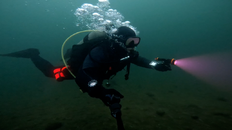TrimixToo
Contributor
As a teenager diving in Maine, I'd dive in the winter using a 3mm hooded vest under a 7mm farmer john with a 7mm hood, 3-finger gloves, and 7mm boots. I'd pre-fill the suit with warm water (we lived on the beach and I always did shore entries). After about 30 minutes my feet would get cold. Fast forward to today: I am far less cold-tolerant and could not possibly tolerate diving in those water temperatures in a et suit. (A few times, the surface temperature was a slushy 28F. It warmed to 45-50F at 50-60 feet.)




